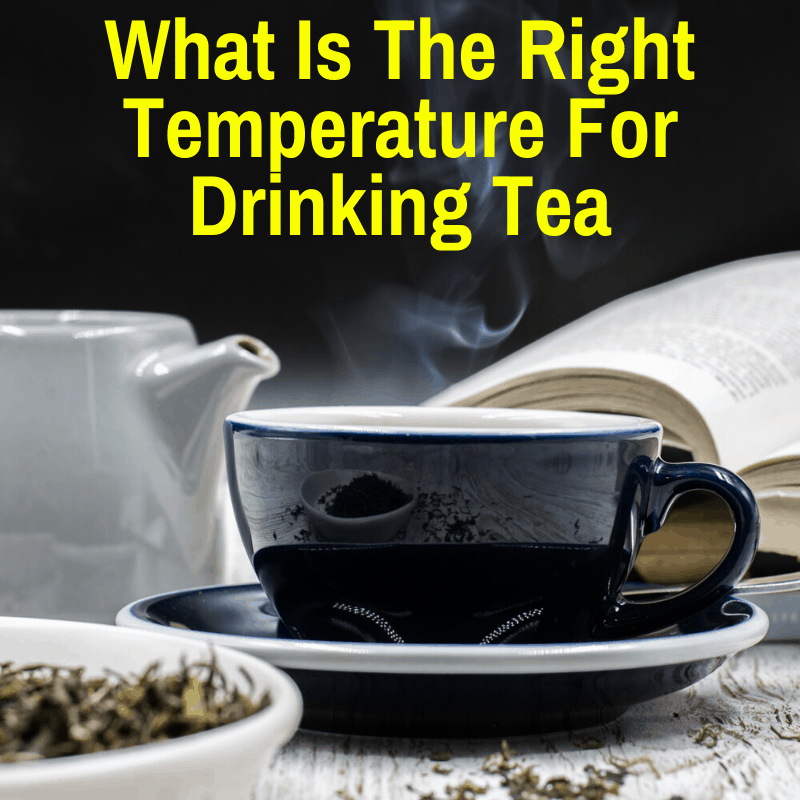
That’s right. The drink that has been shown to reduce the risk of certain cancers can cause the disease as well.
How so?
Drinking you tea too hot (or any other drink as well) can cause esophageal cancer.
That is why it is important to drink your tea at an appropriate temperature.
And it is rarely the temperature at which you brew the tea.
So what is the ideal drinking temp for tea?
We’ll get into much more detail below, but here is the quick answer.
Table of Contents
What Is The Best Temperature For Drinking Tea
You want your tea (or coffee or other hot drink) to be below 150° F (65° C). Ideally, you want it closer to 135° (57° C).
At this temperature, you can be sure that you are not causing damage to your mouth, tongue and throat from drinking a liquid that is too hot.
Note that the drinking temp is not the same as the brewing temp. That varies considerably depending on the type of tea. It also has a large impact on the flavor.
Let’s take a quick look at the factors that affect a tea’s flavor, with a particular focus on the brewing temp. For much more, read my tea temperature brewing guide.
Temperature And Other Factors Affecting The Flavor Of Tea
When it comes to making the perfect cup of tea, there are many factors to consider. You need to decide on a type of tea, the tools you will use to make it, the amount of leaves to use, the steeping time and the temperature.
The following factors affect the flavor of your cup of tea:
- Type of tea (i.e. how the leaves were grown and processed)
- Quality of the tea
- Age of the tea leaves (older leaves lose their flavor, though pu’er is an exception)
- Steeping time
- Steeping temperature
In this article, we will primarily concern ourselves with the last two, especially the temperature. The steeping temperature is what activates many of the important compounds in tea.
But first, let’s take a quick look at the first factor: the type of tea. The primary differentiator between different types of tea (i.e. green tea, black tea, oolong tea, etc.) is the amount of oxidation the leaves undergo.
Oxidation
When tea is processed, the leaves are baked, rolled, or cut, giving oxygen access to the important enzymes. You can see the effects of oxidation by the changes in the color of the tea leaves, which turn a light to dark shade of brown, once they have been exposed to oxygen.
Different types of tea are oxidized for different periods of time. Green tea, for example, is barely oxidized, while oolong is moderately oxidized, and black tea is fully oxidized.
Each tea has an ideal water temperature at which it should be infused, based on the tea’s level of oxidation. This is all due to the different substances that are found within the tea leaves.
Enzymes called polyphenols contain catechins and are impacted by oxygen. The catechins offer a variety of health benefits, but they also impact the overall flavor of the tea. The catechins make tea very bitter, but oxidation minimizes the bitterness and makes for a sweeter taste.
Heat is the key to unlocking the catechins. They are extracted at higher temperatures. Adding boiling water to tea that’s barely oxidized draws out too many catechins and leads to a more bitter flavor.
A more oxidized tea can handle (and actually requires) a higher brewing temperature, because the catechins have already been made less bitter by oxidation.
Water Temperature
Most people use a whistling tea kettle, like the Le Creuset Q9401-17, to heat the water for their tea. This results in boiling water, which is too hot for many types of tea. Fortunately, there are some ways you can make the water temperature optimal for your brew.
The easiest solution is to simply add cold water, or to let the water cool for a bit before pouring it over your tea leaves. Use a thermometer to check the water temperature for better accuracy.
The best way to ensure you always get water that at the perfect temperature is to use a water boiler with a variable temperature setting, or an electric kettle with the same.
You could also use the size of the bubbles in the water as it nears the boiling point to estimate the temperature, though this is not a very accurate method.
To use the bubbles, let the water heat to a gentle boil. Stop heating the water when the bubbles reach the size you need.
Pea-sized bubbles are perfect for green tea, while for black, pu-erh and herbal teas, the bubbles should be dime-sized. Oolong tea should be in between and white tea should be slightly smaller than pea-sized.
Steeping Time
The steeping time has just as much of an impact on the flavor as the temperature. And just like with the temperature, each type of tea has unique instructions in terms of how long the leaves should remain in the water before the tea is ready for consumption.
Delicate green teas only need a minute or two to steep, while darker teas need three to five minutes.
Many tea drinkers rely on the steeping time to adjust the strength of their brew, but this can result in a bitter flavor since some compounds are released later on in the brewing process. That said, some people enjoy a more bitter flavor.
Steeping for a shorter period of time works to extract many of the volatile compounds that make up the aroma and flavor, without extracting too much astringency and bitterness. If a shorter steeping time makes your tea too week, use more tea leaves in your infuser to offset this.
Higher temperatures cause the leaves to rehydrate, allowing them to release their flavors quickly. Because of this, a short steeping time can work to balance the flavor if the water you use it too hot.
If the water you use is cooler than it should be, you’ll need to use a longer steeping time in order to extract flavor. Even cold water is able to extract a variety of flavors if you give it a long enough steeping time (more on this below).
In the end, finding the right balance between temperature, steeping time and the amount of leaves requires some experimentation.
If you’re new to tea drinking, your best bet in the beginning are varieties that are more flexible and will still taste good even if you screw up the brewing process a little. These are generally the more oxidized teas, like black teas.
To learn much more about the brewing process and how it can impact flavor, as well as the ideal brewing temperatures and steeping times for every type of tea, read my complete brewing guide.
No matter what temperature you brew your tea at, there is one big problem. It will always be too hot to drink safely. Even if you can handle drinking it that hot, you shouldn’t do it, because hot liquids can cause irreparable harm.
Do Hot Drinks Cause Cancer?
There have been many studies involving the health benefits and the dangers of caffeinated drinks and hot drinks. Many researchers claim that it’s not the content of hot drinks, but the temperature of the drink itself, that you need to be wary of.
According to the International Agency for Research, consuming beverages that are over one hundred and fifty degrees can increase your risk of esophageal cancer.
Research suggests that the consumption of very hot beverages can double your risk of cancer, which is already high at one in fifty-five. This is due to the damage the heat can cause to the throat.
While the research is still in its early stages, it’s very concerning. That’s why it is best to play it safe and not drink your tea when it is super hot.
Ideal Serving Temperature For Tea
After you’ve boiled the water and brewed your tea, you want to make sure it has cooled down sufficiently before drinking. At the very least, make sure the tea is below one hundred and fifty degrees.
One hundred and thirty-five is a better temperature for any type of hot drink. At this lower temperature, you can be sure you are not causing harm to your mouth and throat.
This doesn’t mean that you can’t follow the proper heating guidelines and boil the water to the appropriate temperature based on the type of tea. It simply means you should ensure that the water has had time to cool down before you drink it.
Obviously, since black teas and herbal blends are brewed at a higher temperature, they will need longer to cool down. While you could add a little cold water or ice if you are in a hurry, this can impact the flavor of the tea and can make it taste watered down.
It’s always best to be a bit patient and give it plenty of time to cool down naturally before you drink it. And it doesn’t hurt to get some help in the form of a thermometer.
Thermometer
Some tea drinkers may scoff at the idea of using a thermometer to test the temperature of their water, but it’s a great tool, if you want to both lower your risk of cancer and get the most out of your tea.
Many major tea manufacturers now produce their own version of a tea thermometer, but you can use any type of food thermometer, whether it’s a basic manual thermometer or it’s battery-powered.
Using one of these thermometers ensures that you give the water enough time to cool down to a safe temperature before consuming the tea.
I highly recommend getting one to protect yourself against burns which can damage to the tender tissues in the mouth and throat, and to reduce your risk of cancer later on in life. They are great for coffee drinkers and drinkers of any other hot drinks, as well.
Not only will a thermometer ensure that you don’t drink the tea while it is too hot, it will also make sure you don’t let it get too cold. If it cools too much, it loses some of its health benefits and also just doesn’t taste as good.
How We Experience Flavor
The close link between tea flavor and the temperature of the water can also impact our taste buds since they are temperature sensitive. Our taste buds are triggered and begin working at higher temperatures. This sends a signal to the brain to begin detecting flavors.
If your tea becomes cold, avoid reheating it in the microwave. Not only is it difficult to detect the right temperature, but the tea is already oxidized and reheating it can make it taste overly bitter.
Allowing a hot brew to become cold isn’t ideal, but brewing a tea with cold water is a different matter. Cold infusions and cold brews are quickly growing in popularity.
They are easier to brew (though they take much longer) and actually preserve more catechins, since none are destroyed by heat. And despite the cold water, the catechins are released anyway due to the extremely long brewing time.
Cold Teas
As you know by now, there’s a delicate balance to achieving the perfect cup of hot tea. You don’t want to use a temperature that’s too low or too high. One way to avoid having to deal with this is to simply prepare cold tea.
Brewing cold tea correctly also releases the catechins. Despite using cold water, they are released anyway due to the extremely long brewing time. But the cold water does not release any tannins, making the resulting tea sweet and not bitter at all.
Cold brewing tea can be a great way to get the health benefits, without the bitterness and without the caffeine. That and the lack of bitterness makes cold brew green tea hugely popular. Let’s take a quick look at some of the health benefits catechins offer.
The polyphenols and catechins in a tea can help to combat cell damage, fight aging, and can prevent harmful diseases. That’s why you want the water to be hot enough to release these compounds, but not hot enough to harm them or cause a negative impact on the flavor of your tea.
Or you want to cold brew the tea, which also causes the catechins to be released. But note that cold brewing is not the same as brewing the leaves with hot water, and then letting them cool down. This actually results in a loss of catechins.
They are released at higher temperatures, but tend to disappear when temperatures drop. Studies have shown that green tea loses much of its catechin content if it’s allowed to cool. Because of this, it’s not ideal to let your tea to cool off completely.
The good news is that this occurs over a period of five to seven hours, so don’t worry if your tea has only been cooling for an hour or so.
The same study mentioned above also found that adding lemon juice to the tea helped to slow down this process, so you can buy yourself even more time this way, in addition to adding some extra flavor.
Best Drinking Temperature: Final Thoughts
When it comes to the flavor and the health benefits of tea, the brewing temperature is very important. By making sure you use the right temperature, you can unlock many important compounds in tea, so you get the most nutrients out of every cup.
Just as important is the drinking temperature.
You might think the hotter the tea, the more enjoyable, but drinking liquids that are too hot can cause serious damage. It can lead to esophageal cancer and other health issues down the road.
That is why you should always let your tea cool to a temperature between 135° and 150° F (57° to 65° C) before drinking.
Use a thermometer if you have to. Your health is too important!
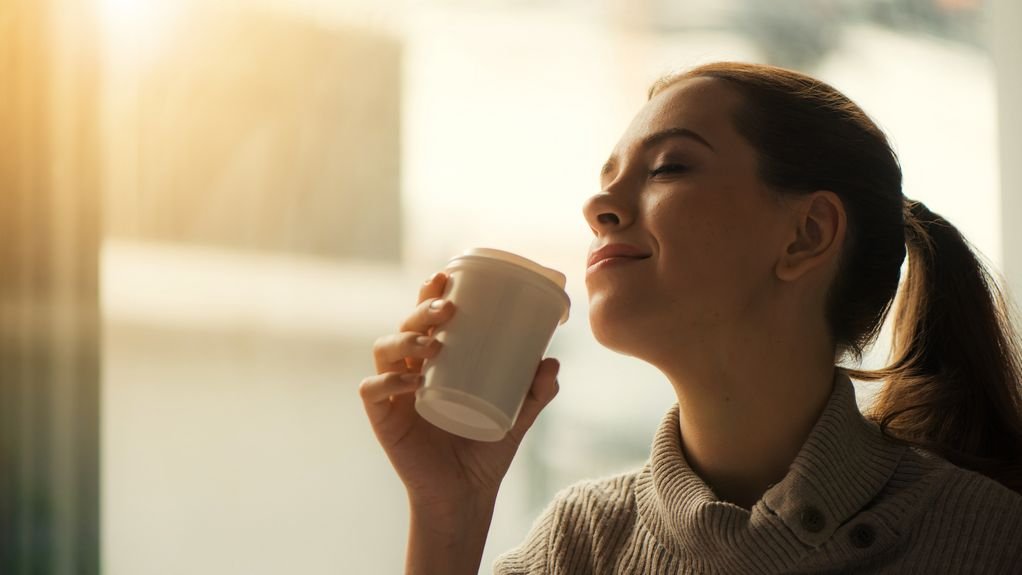
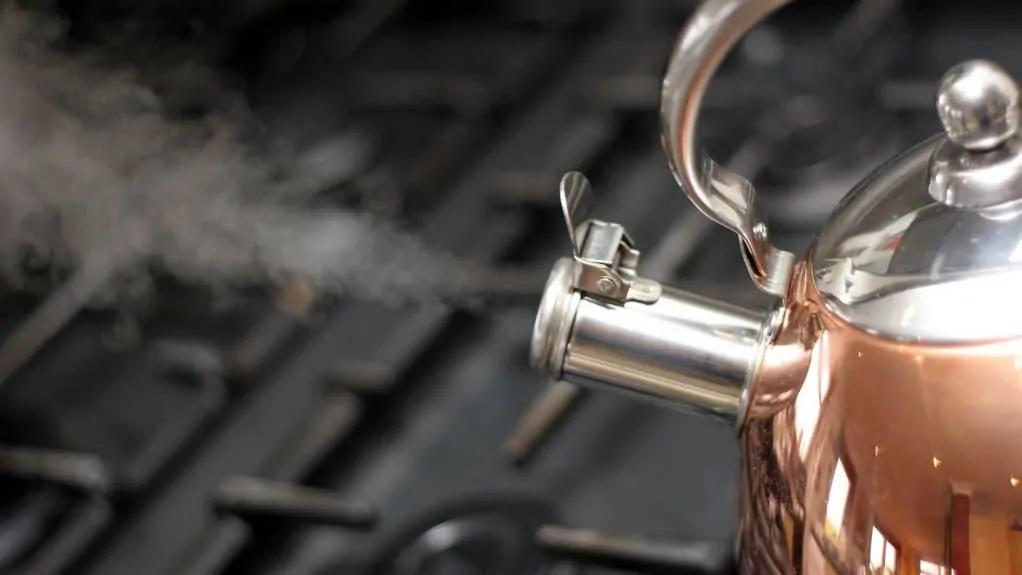
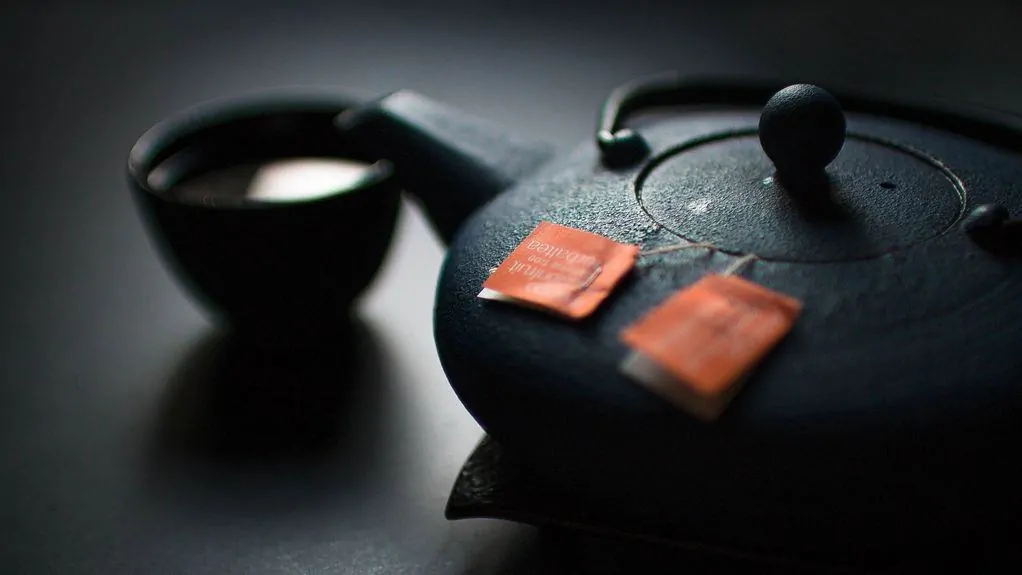
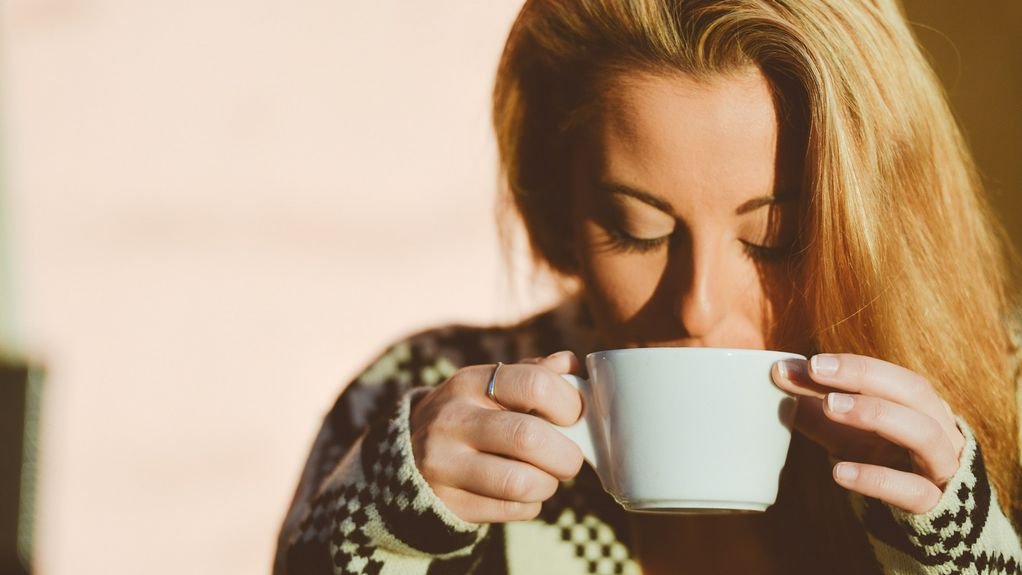
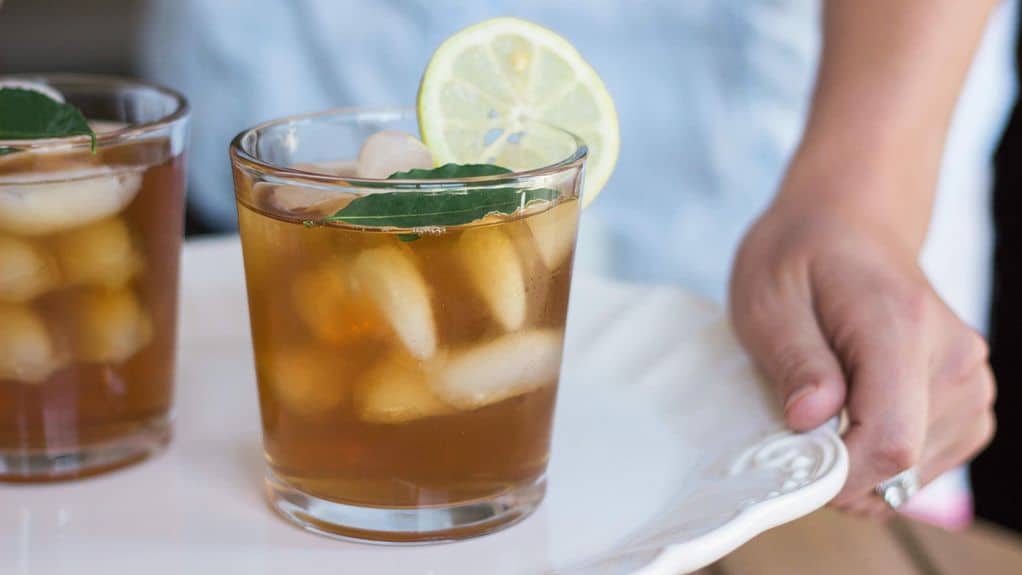
“After you’ve boiled the water and brewed your tea, you want to make sure it has cooled down sufficiently before drinking. ..”
Some blinding glimpses of the obvious here. Thank you
You’d be surprised how many people drink their tea when it is still far too hot.
Personally, I prefer my tea a little cooler. I like to drink it at around 52 Celsius. (126 Fahrenheit). My wife thinks I’m mad – anything below 58 is cold to her.
I like it both hot and cold, which is good, since my pot of tea always ends up cold by the time I get to the end of it.